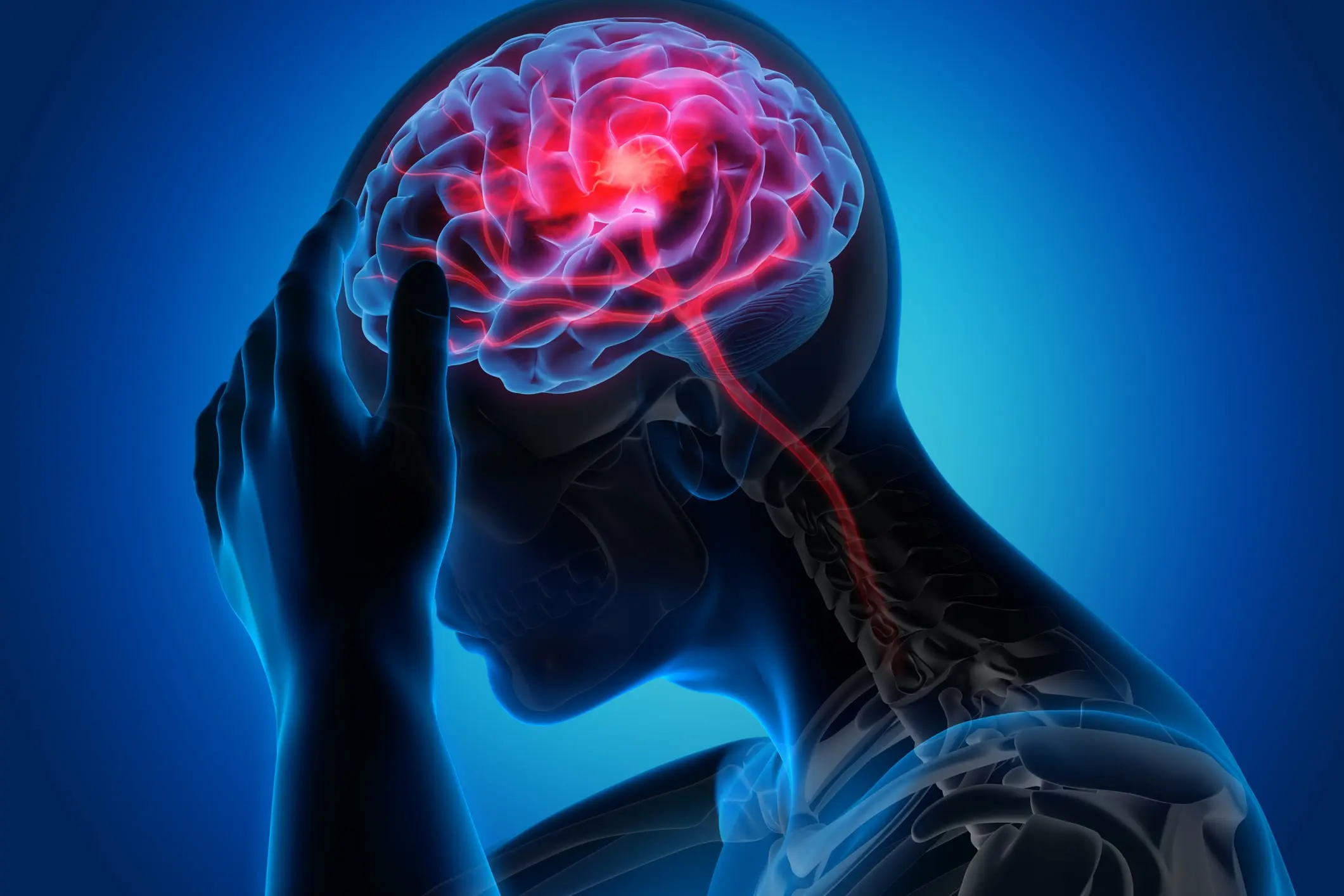Driving While Impaired (DWI) is not only illegal but also highly irresponsible and dangerous.
DWI refers to the act of operating a vehicle while under the influence of drugs, alcohol, or other substances that impair cognitive and motor functions.
This article discusses the legal and safety consequences of impaired driving, highlighting its detrimental effects on individuals and society and emphasizing the significance of responsible driving practices.
Understanding Impairment Behind the Wheel
What Does Driving While Impaired (DWI) Mean?
Driving While Impaired (DWI) is defined as operating a motor vehicle while one’s mental or physical abilities are compromised due to the consumption of alcohol, drugs (including prescription and over-the-counter medications), or other intoxicating substances.
This definition includes any substance that impairs cognitive or motor skills essential for safe driving.
The level of impairment that is considered as DWI can vary by jurisdiction, but it is often measured by Blood Alcohol Concentration (BAC) levels.
Standard legal thresholds are 0.08% or lower.
Different Substances and Their Impairing Effects on Driving Abilities:
Various substances negatively affect driving abilities.
Alcohol, a central nervous system depressant, typically impairs judgment, coordination, and reaction times, leading to risky decision-making and slower responses.
Marijuana affects drivers by slowing reaction time, impairing judgment of time and distance, and reducing motor coordination, which can lead to difficulties in maintaining lane position and attentiveness.
Opioids, including prescription painkillers and heroin, cause drowsiness and impaired cognitive functions, significantly affecting a driver’s reaction time and decision-making abilities.1
Stimulants such as cocaine and methamphetamine often result in overconfidence, increased risk-taking, and aggressive driving behaviors.
Sedatives, including benzodiazepines, lead to drowsiness, dizziness, and decreased alertness, heavily impacting the driver’s ability to operate the vehicle safely.
Each of these substances poses unique challenges and risks to driving, underscoring the importance of understanding their specific effects.
| Substance: | Impairing Effects on Driving Abilities: |
|---|---|
| Alcohol | Affects the central nervous system, leading to reduced coordination, slower reaction times, impaired judgment, and overconfidence. Impacts decision-making and ability to react to changing road conditions. |
| Marijuana | Can cause slower reaction time, impaired judgment of time and distance, and decreased motor coordination. May lead to difficulties in lane tracking and maintaining attention on the road. |
| Opioids | Prescription opioids and illegal narcotics like heroin can cause drowsiness, impaired thinking, and slowed reaction times. These effects significantly impair driving abilities and increase accident risk. |
| Stimulants (e.g., cocaine, methamphetamine) | Can cause aggressive and reckless driving. Users may experience a false sense of alertness and overconfidence, leading to risky behaviors. |
| Sedatives (e.g., benzodiazepines) | Can cause drowsiness, dizziness, and confusion, heavily impairing driving skills. The induced relaxation and lowered alertness are dangerous for drivers. |
Comparison Between Alcohol Impairment and Drug Impairment:
Comparing alcohol and drug impairment reveals distinct and overlapping effects on driving abilities.
Alcohol typically causes decreased motor skills, impaired judgment, and slower reaction times.
In contrast, the results of drugs vary based on the substance: marijuana can cause delayed reactions and poor judgment, similar to alcohol.
Still, it might also affect perception and time estimation more significantly.
Opioids, like alcohol, lead to drowsiness and slower reactions, yet they may also result in more profound cognitive impairment.
Stimulants, contrary to alcohol, often lead to heightened risk-taking and a false sense of alertness, potentially resulting in aggressive driving behaviors.
Sedatives, akin to alcohol, cause significant drowsiness and coordination issues but might have stronger effects on reaction time and overall alertness.
Overall, while there are similarities in the impairments caused by alcohol and various drugs, the specific results can vary greatly, affecting driving safety in different ways.
| Comparison: | Effects on Driving Abilities: |
|---|---|
| Alcohol vs. Marijuana | Both impair judgment and motor coordination. Alcohol leads to more consistent and predictable impairment, while marijuana’s effects vary more among individuals. |
| Alcohol vs. Opioids | Both cause drowsiness and slowed reaction times. Opioids may result in deeper sedation and cognitive impairment. |
| Alcohol vs. Stimulants | Alcohol impairs judgment and motor skills. Stimulants cause heightened risk-taking and a false sense of alertness, contrasting with alcohol’s effect of slowing cognitive processes. |
| Alcohol vs. Sedatives | Both can cause significant drowsiness and coordination issues. Sedatives might have a more pronounced effect on reaction time and alertness. |
The Science of Impairment: How Substances Affect Driving Skills
Neurological Impact of Substances on Driving:
The science of impairment aims to understand how different substances, such as alcohol and prescription drugs, affect the brain’s normal functioning and physical abilities, causing difficulty in performing tasks safely and efficiently.
The central nervous system plays a vital role in this, as these substances disrupt the chemical messengers in the brain, known as neurotransmitters, leading to altered perceptions, judgment, and motor skills.2
All of these functions are essential for activities such as driving.
Alcohol, for example, is a depressant that slows down brain function and impairs cognitive and motor abilities.
At the same time, stimulants like cocaine can create a false sense of alertness and increase risk-taking behaviors.
Although each substance affects the brain and body differently, they all impair the ability to process information, react to emergencies, and make sound decisions.
Understanding this is crucial not only for individuals to make informed decisions about substance use but also for the development of legal standards, public health strategies, and safety campaigns that aim to reduce the risks associated with impairment.
Blood Alcohol Concentration (BAC): Measuring Alcohol Impairment
Understanding BAC and its Legal Thresholds:
BAC is the percentage of alcohol present in a person’s bloodstream.
For example, a BAC of 0.08% means that 0.08% of a person’s blood, by volume, is alcohol.
The legal limit for BAC varies depending on the jurisdiction, but many regions set it at 0.08% for standard drivers.
If a person’s BAC goes above this limit, they are considered legally impaired to drive.
However, for commercial drivers and individuals under the legal drinking age, the thresholds are usually lower, reflecting a stricter stance on impaired driving.
BAC Limits Across Different States and Countries:
BAC limits can vary significantly across different states and countries, reflecting diverse legal and cultural attitudes toward drinking and driving.
In the United States, most states follow the 0.08% limit for standard drivers, but some have lower limits for specific categories of drivers.3
Internationally, these limits can range from zero tolerance in countries like Brazil and Russia to 0.05% in Australia and many European countries and even up to 0.08% in Canada and the United Kingdom.
Methods of BAC Testing:
BAC is often measured using breathalyzers, blood tests, and field sobriety tests.
Breathalyzers are commonly used due to their non-invasiveness and immediate results.
Blood tests provide a more accurate measurement of BAC but are more invasive.
They are often used in severe cases or when breathalyzer results are disputed.
Field sobriety tests are a series of physical and cognitive exercises administered by law enforcement, such as walking in a straight line or following a moving object with the eyes, to assess a driver’s level of impairment.
While not directly measuring BAC, these tests can provide evidence of impairment that might prompt further BAC testing.
Law enforcement officers must understand and effectively employ these methods to enforce DUI (Driving Under the Influence) laws and ensure road safety.
"Driving While Impaired" vs. "Driving Under the Influence" (DUI)
Legal definitions:
DWI refers to Driving While Impaired by alcohol or drugs to the point where one’s driving ability is compromised.
In contrast, DUI typically refers to Driving Under the Influence of alcohol or drugs.
In some regions, DUI is used to denote less severe impairment, and DWI is used for more severe cases.
In other areas, the terms may be used synonymously.
Consequences:
Both charges can result in fines, license suspension or revocation, mandatory education or treatment programs, and even jail time, especially for repeat offenses or if impaired driving results in an accident.
However, depending on local laws, one classification may carry more severe penalties than the other.
Terminology:
Depending on the region, impaired driving charges can have varying terminology and legal implications.
Some U.S. states may use DWI and DUI distinctly, while others may have only one term for both types of offenses.
Different terms and classifications might be used in some countries outside the U.S., such as “drink-driving” or “drug-driving” offenses.
Understanding the specific legal context and terminology is crucial for drivers, as it can have significant implications for the legal process and outcomes following an impaired driving charge.
The Legal Landscape: DWI Laws and Penalties
The laws and penalties related to DWI (Driving While Impaired) in the United States are complex and vary from state to state.
However, there are some common elements in how these laws are enforced:
Overview of DWI Laws in the United States:
In the United States, DWI laws are state-specific, but they all prohibit driving while impaired by alcohol or drugs.
The Blood Alcohol Concentration (BAC) level of 0.08% is the standard measure for alcohol impairment, with lower limits applying to commercial drivers and individuals under 21.
While some states distinguish between DWI and DUI (Driving Under the Influence), others use these terms interchangeably.
Laws also address drug-impaired driving and include both prescription/over-the-counter medications and illegal substances.
Penalties and Repercussions for Driving While Impaired:
The penalties for DWI vary but generally include fines, license suspension or revocation, and possible jail time.
The severity of the punishments often depends on the level of impairment, previous offenses, and whether the incident resulted in an accident or injuries.
Many states also require offenders to participate in alcohol education or treatment programs.
For repeat offenders, the penalties typically become more severe, including longer jail sentences, higher fines, and extended or permanent loss of driving privileges.
Enhancements and Aggravating Factors in DWI Cases:
Several factors can enhance or aggravate a DWI charge, leading to more severe penalties.
These include having an exceptionally high BAC (often 0.15% or higher), having minors in the vehicle, causing an accident that results in injury or death, and having prior DWI convictions.
Some states also impose harsher penalties for refusal to undergo BAC testing when suspected of DWI.
Aggravating factors are taken seriously in the legal system as they indicate higher recklessness and endangerment to public safety.
Overall, the DWI laws in the U.S. aim to prevent impaired driving and penalize those who endanger others by driving under the influence of alcohol or drugs.
The legal repercussions serve as a punishment and strive to educate and rehabilitate offenders to prevent future incidents.
The Ripple Effect of Impaired Driving
Statistical Overview of Accidents and Fatalities Caused by Impaired Driving:
Impaired driving has a profound and far-reaching impact on individuals, families, and society.
This is often referred to as the “ripple effect.”
Impaired driving causes a significant number of traffic accidents and fatalities every year.
For instance, in the United States, approximately one-third of all traffic-related deaths are caused by a driver who is under the influence of alcohol or drugs.4
These statistics highlight the severity of the problem and emphasize the importance of continuous efforts to reduce impaired driving.
Long-Term Impacts on Victims and Their Families:
The consequences of impaired driving accidents extend far beyond the immediate aftermath of the incident.
Victims may suffer from long-term physical injuries, disability, and emotional trauma.
The psychological impact can also extend to their families, who may face emotional distress, financial burdens due to medical and rehabilitation costs, and, in the worst cases, the grief of losing a loved one.
These long-term effects can deeply alter the lives and futures of those affected.
The Societal and Economic Costs of DWI:
The ripple effect of impaired driving has significant societal and economic costs.
These include the financial burden on healthcare systems due to the treatment of injuries resulting from such accidents, legal and court costs, and costs associated with law enforcement and emergency response.
There’s also a broader social impact, such as the loss of productivity due to injury or death and the potential increase in insurance premiums.
On a larger scale, the prevalence of impaired driving can contribute to a general sense of insecurity on the roads, affecting the well-being and quality of life of the broader community.
The impact of impaired driving is far-reaching and affects individuals, families, communities, and society in various and often profound ways.
Effective DWI laws, public awareness campaigns, and ongoing efforts to mitigate this serious issue are crucial.
Prevention and Education: Reducing the Incidence of Impaired Driving
Preventing impaired driving requires a combination of prevention and education efforts.
The focus should be on raising awareness of the dangers of DWI (Driving While Impaired) and offering practical solutions to prevent it.
Role of Education Programs in Preventing DWI:
Education programs are essential in preventing impaired driving.
They inform individuals, particularly new and young drivers, about the risks associated with driving under the influence of alcohol or drugs.
These programs cover DWI’s legal, personal, and societal consequences, aiming to instill responsible drinking habits, emphasize the significance of planning ahead, and promote the use of designated drivers.
Educational initiatives can significantly influence attitudes and behaviors toward impaired driving in schools, universities, and workplaces.
Public Awareness Campaigns and Their Effectiveness:
Raising awareness of impaired driving as a public health issue is crucial, and public awareness campaigns play a vital role.
These campaigns employ a combination of media channels to disseminate messages about the hazards of driving under the influence (DUI), share personal stories of those affected, and offer information on legal repercussions.
High-visibility enforcement campaigns, such as sobriety checkpoints, are also used to discourage impaired driving.
These campaigns are effective in reminding people of the risks and consequences of DUI.
They are often more impactful when they coincide with peak times of impaired driving, such as holidays or significant events.
Technology’s Role in Prevention:
Technology has become an essential tool in the fight against impaired driving.
Ignition interlock devices, which require drivers to perform a breathalyzer test before starting their vehicle, have proven effective in preventing repeat offenses by individuals previously convicted of DWI.
Courts often mandate these devices as part of sentencing or as a condition for reinstating driving privileges.
Additionally, the increasing popularity of ride-sharing apps has provided a convenient and accessible alternative to driving under the influence.
These apps make it easier for individuals who have been drinking to find a safe ride home, thereby reducing the likelihood of impaired driving incidents.
To summarize, the combination of education, public awareness campaigns, and technology plays a crucial role in reducing the incidence of impaired driving.
By increasing knowledge, altering attitudes, and providing practical tools to prevent DWI, these efforts work together to enhance road safety and save lives.
Getting Back on Track: Rehabilitation and Reinstatement After a DWI
DUI Education Programs and Substance Abuse Treatment Options:
Individuals convicted of impaired driving are often required to attend DUI education programs to learn about the dangers of driving under the influence of alcohol or drugs, the legal consequences of their actions, and how to avoid future offenses.
Substance abuse treatment programs, such as counseling and therapy, may also be recommended or required, particularly for repeat offenders or those with substance abuse problems.
These programs aim to address the root causes of impaired driving, offering a path toward recovery and preventing future incidents.
The Process of License Reinstatement and Legal Recovery:
The process of license reinstatement involves several steps, including serving any imposed suspension period, completing required DUI education or treatment programs, and paying necessary fines and fees.
Offenders may also need to attend court hearings or meet with probation officers.
An ignition interlock device may sometimes be required, especially for repeat offenses.
The legal recovery process is not just about regaining driving privileges; it’s also about demonstrating responsibility and commitment to safer driving behaviors.
Committing to Road Safety: The Collective Responsibility to Prevent DWI
After exploring what driving while impaired (DWI) entails, it’s clear that operating a vehicle under the influence of alcohol, drugs, or other mind-altering substances is extremely dangerous and has severe legal implications.
Understanding the varied effects of these substances on driving abilities highlights the importance of making informed decisions and exhibiting responsible behavior on the road.
As individuals and members of our communities, it is our collective responsibility to prevent DWI incidents.
We must proactively educate ourselves and others, make conscious choices to avoid driving while impaired, and advocate for safe driving practices.
Let us all commit to this responsibility, ensuring the safety and well-being of everyone on our roads.
Are You Navigating the Consequences of a DUI/DWI?
Cornerstone Healing Center, located in Scottsdale, AZ, provides comprehensive online solutions for individuals with DUI-related challenges.
Our DUI Classes, Alcohol Screenings, and DUI Screening Assessments are approved by DMV and MVD and available online, making it easy and convenient for individuals to fulfill their DUI obligations without the inconvenience of in-person requirements.
We understand the difficulties of legal mandates, so we’ve made our programs readily accessible from anywhere and anytime.
Apart from DUI services, our center offers effective alcohol addiction treatment and rehabilitation programs specifically designed to support individuals battling alcohol addiction by providing essential resources and assistance for a successful recovery.
Our holistic approach is aimed at addressing and overcoming the complex issues of alcohol use, whether you are navigating legal mandates or seeking help in addiction recovery.
Contact us today to start your journey towards healing and rehabilitation!








